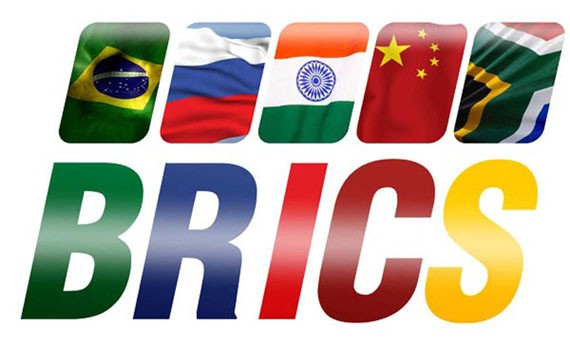BRICs Investing In Emerging Markets
Post on: 1 Июнь, 2015 No Comment

Highlights
- BRICs have sported turbo-powered economies for more than 10 years.
- Volatility is the norm for BRICs, with Russia having the bumpiest economy.
- Brazil is the least corrupt and easiest country for new investors.
Investing » BRICs: Investing In Emerging Markets
Emerging markets are still outshining developed countries.
Investing strategies
Videos
Tools
Why? They’re populous, resource-rich and entrepreneurial. Goldman Sachs, which coined the BRIC term, has predicted the foursome will become the top economies by 2050.
Because of the size of their economies, BRICs are the most accessible countries for investing in emerging markets, says Melissa Joy, director of investments and client services at the Center for Financial Planning in Southfield, Mich. For example, China is the world’s second-biggest economy, Brazil the sixth.
Investors can become involved in BRIC investing through mutual funds, exchange-traded funds, currency buying and selling, and American depositary receipts, among other investing.
Even with those many options, because of their complex economies, BRIC countries make for challenging investments. With each BRIC country, you’re navigating separate regulations, currencies, reporting requirements and potential growth paths, Joy says. As such, going with a professional money manager may be the right move.
BRICs are still bumpy
Even with their growth, bumps have popping up recently. The widely followed MSCI BRIC Index, the most common benchmark for BRIC investments, sank 24 percent last year. And $15 billion flowed out of BRIC mutual funds as well, according to EPFR Global Data in Cambridge, Mass. On the upside, MSCI’s index outperformed the Standard & Poor’s 500 by 390 percentage points from November 2001 through September 2010, according to Bloomberg.
Also, volatility is the norm for BRICs. Of the four countries, Russia’s market is the bumpiest. It can go up 100 percent one year and lose 80 percent the next, Joy says. China markets are the least volatile, followed by Brazil.
If you are skittish, expect a bumpy ride, Joy says. Don’t exit if there’s a 20 percent investment decline. For these reasons, plow no more than 10 percent of assets into BRIC country investments, says Eric Schaefer, chief of investment products at American Independence Financial Services in New York.
Joy prefers managed investments like international mutual funds and exchange-traded funds. Some other investments — like trading in BRIC country currencies — have more complications, she says.
Good record of growth
BRICs appear solidly on a growth track. Earnings growth and fundamentals are better than in major markets, says Antoine van Agtmael, chairman and chief investment officer at Ashmore EMM, based in Arlington, Va. Meanwhile, developed markets go from mediocre to bad.

China and India will be the fast-growing BRIC economies in 2012, according to the World Bank. China’s gross domestic product grew by 9 percent in 2011 and is forecast to grow by 7.6 percent this year. India is expected to notch 6 percent GDP growth in 2012 versus 6.5 percent in 2011. In addition, Russia and Brazil will grow slowly — less than 3 percent — in 2012 over 2011.
The trick in emerging-market investing is choosing the best performers among BRICs. Russia is usually cited as a difficult country to navigate investment-wise. Russia is fairly corrupt, van Agtmael says. Brazil is the least corrupt and easiest for new investors to enter.
Not all BRIC investments will excel. The country currencies are one example. They tend to be more volatile, and BRIC currencies may go nowhere for long stretches of time, Schaefer says.
The best BRIC investments
That said, here are the three best BRIC investment vehicles:
Exchange-traded funds. There are five BRIC ETFs, in which you can buy shares, according to the ETF database website. For example, the iShares MSCI BRIC Index Fund tracks the MSCI BRIC Index and the SPDR S&P BRIC 40 tracks the S&P BRIC Index.
Stick with the larger, plain vanilla ETFs such as the MSCI, Schaefer says. Some ETFs are thinly traded, so you might have to pay a premium.
Single country ETFs, such as the iShares MSCI Brazil Index Fund, also are BRIC investment plays. The sizes of these countries make their ETFs significant, Schaefer says.
Since Brazil is now the world’s sixth-largest economy after displacing the United Kingdom, start with Brazilian ETFs, Schaefer says. In terms of regulations, they’re further along, he says.
International mutual funds. Joy recommends these funds, since they typically invest 20 percent to 30 percent of their assets in emerging markets.
Managers with global access can make better decisions on what allocation BRICs should have, Joy says. Dodge & Cox Funds as well as Ivy Funds are examples of firms that have staked out international markets, she says.
Also, international funds include newly emerging countries such as Indonesia and Turkey in their mix. These countries may surpass the BRICs soon. And van Agtmael says owning shares in a broad-based fund can prevent selling at the wrong moment when markets dip.
American depositary receipts. ADRs are foreign company stocks traded on an American exchange. And they’re another good way for sophisticated investors to play BRICs.
Even so, finding the best investments in a specific country can be daunting. If you take this investing path, don’t buy more than five ADRs at one time, van Agtmael says.
Schaefer favors ADRs in Brazil since it has the strongest laws and regulations. Financial regulations aren’t as strong in China and Russia, he says. And try to buy and hold ADRs for long periods because they’re more volatile than U.S. stocks.
BRICs are a brand name, not an investment strategy, according to Joy. But there’s real growth, she says.














